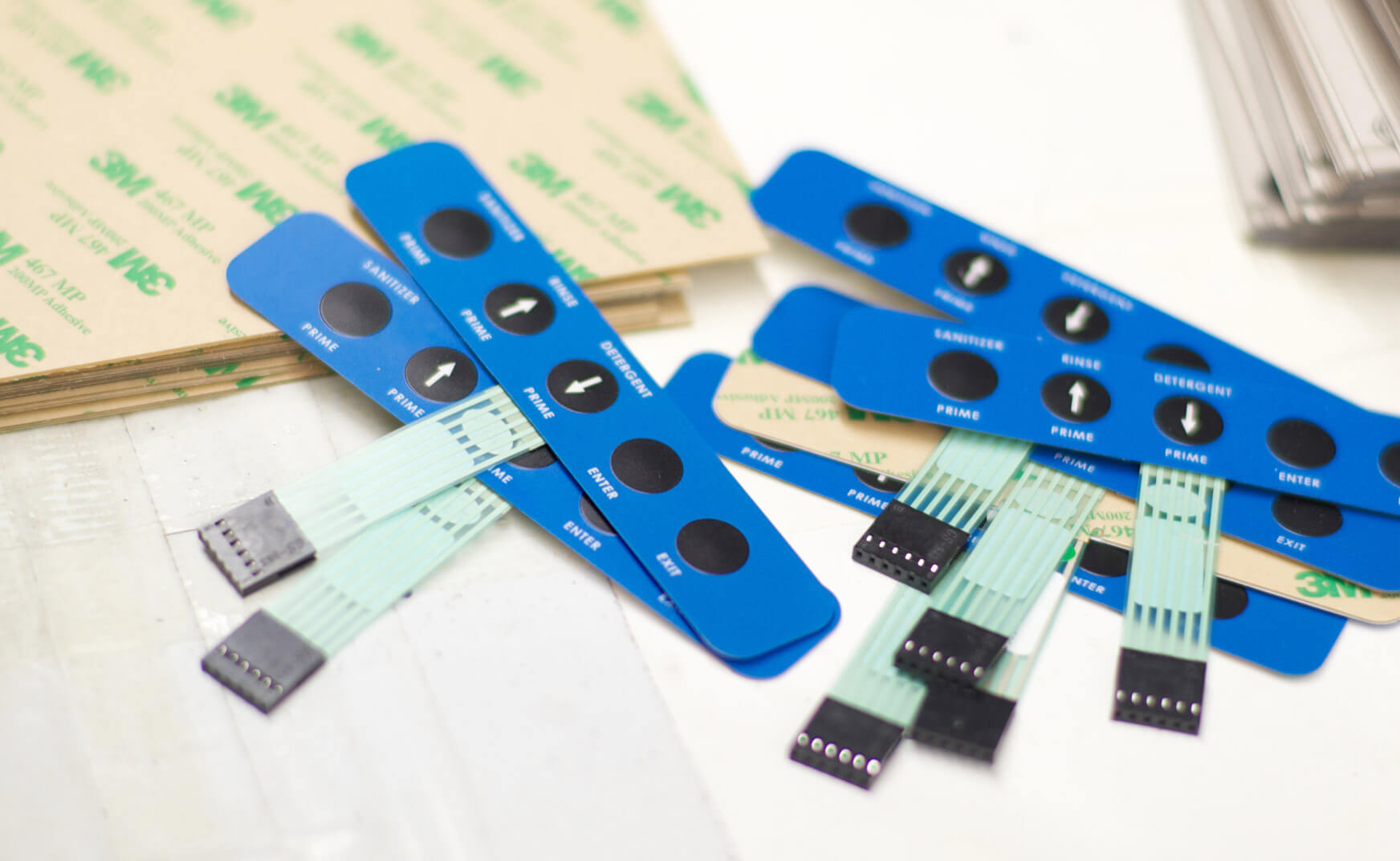Why Membrane Layer Switches Are Vital for Long Lasting Control Equipment
Membrane switches play a critical function in ensuring the longevity and reliability of control systems across various markets. Their special building permits them to sustain tough ecological variables such as moisture, temperature level extremes, and physical wear. This durability not only extends the life-span of the systems they offer yet additionally decreases upkeep demands. As we discover the complex benefits of membrane layer switches, it comes to be apparent that their relevance goes beyond plain performance, influencing user experience and operational effectiveness. What more effects do these features hold for the future of control system style?
Summary of Membrane Layer Switches
Membrane layer switches are flexible and trusted components frequently utilized in different electronic control systems. The visuals overlay provides both practical and visual layout, while the spacer layer guarantees that the buttons are turned on only when pressed.
Membrane layer buttons are frequently preferred in applications calling for a compact and lightweight style, making them ideal for handheld gadgets, clinical tools, and industrial machinery. They can be personalized to fulfill details user demands and can integrate numerous features such as backlighting, tactile comments, and several colors. Moreover, membrane switches are immune to dirt, dampness, and impurities, making them suitable for environments where resilience is important.
Benefits of Toughness
In several applications, the durability of membrane layer switches offers significant advantages that enhance their overall performance and reliability. These buttons are designed to endure extreme settings, making them excellent for use popular problems such as high humidity, severe temperatures, and direct exposure to chemicals. Their durable building and construction assists to prevent damage from physical effect, guaranteeing lasting performance and reducing the need for constant replacements.
Additionally, membrane layer buttons are immune to use and tear, which is important in applications where regular interaction takes place. This longevity converts to reduce maintenance costs, as organizations gain from minimized downtime and fewer solution disturbances. The encapsulated layout of membrane switches over secures internal parts from dust and dampness access, additional contributing to their life-span (membrane switch).
Another benefit is their capability to maintain constant performance gradually. With a high tolerance for mechanical stress and anxiety, these switches maintain their tactile responses and electric stability, ensuring customer complete satisfaction. Ultimately, the durability of membrane layer changes not just enhances functional effectiveness however additionally fosters self-confidence in their reliability, making them a recommended choice for control systems throughout numerous industries.
Applications in Numerous Industries
Durable control systems utilizing membrane layer switches discover considerable applications across a variety of sectors, each gaining from the distinct features these switches supply. In the medical industry, membrane layer buttons are crucial for gadgets such as person monitors and visit here diagnostic devices, where integrity and convenience of cleaning are critical. Their resistance to dampness and contaminants ensures they preserve performance in clean and sterile settings.
The automotive market leverages membrane buttons for control panel controls and infomercial systems, where they give sleek, low-profile interfaces that boost user experience. These switches are likewise developed to stand up to rough problems, consisting of direct exposure to severe temperature levels and resonances.
In commercial setups, membrane layer buttons are frequently made use of in equipment control board, offering tactile feedback and resilience required for high-usage applications. Their capability to withstand chemicals makes them suitable for manufacturing environments where spills and contaminants are frequent.

Consumer electronics, such as cooking area devices and remotes, likewise use membrane buttons for their convenience and cost-effectiveness. Generally, the versatility and robust nature of membrane layer switches over make them essential across numerous markets, guaranteeing efficient procedure and durability in control systems.
Design and Visual Charm
While functionality is paramount, the layout and aesthetic appeal review of control systems outfitted with membrane switches play an essential duty in individual engagement and total experience (membrane switch). The visual layout of these buttons can significantly affect customer understanding and interaction. A properly designed membrane layer button improves the beauty of the tool, making it much more appealing to individuals and fostering a link between the individual and the product
Membrane changes provide a large amount of versatility in design, permitting producers to tailor graphics, colors, and appearances to align with brand name identification and product appearances. Using vivid colors and unique patterns can draw interest, while responsive responses can strengthen the customer's interaction with the tool. Furthermore, the capacity to incorporate LED indications and backlighting into the membrane layer button design supplies both useful and aesthetic advantages, boosting visibility and usability in various environments.

Enhancing User Experience

In addition, membrane layer buttons can be tailored to include visual user interfaces, enhancing usability by presenting information in a clear and intuitive way (membrane switch). This personalization can include icons, labels, and color coding that guide customers via facility capabilities easily. In addition, their convenience permits assimilation in different atmospheres, making sure constant performance whether in industrial machinery or customer electronic devices
The longevity of membrane layer buttons likewise plays a crucial role in user experience. By holding up against rough problems and prolonged use, these buttons minimize the probability of system failures, thus promoting integrity and customer confidence. Ultimately, the critical usage of membrane switches not just raises functionality yet likewise considerably improves individual interaction with control systems, making them a vital part in contemporary layout.
Verdict
